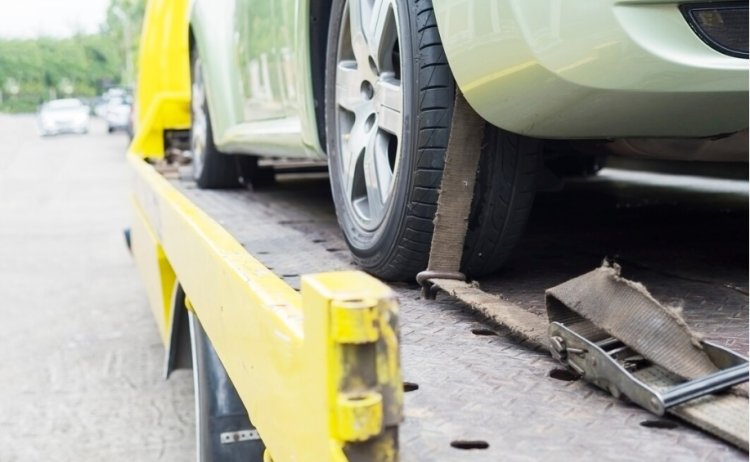Accidents Towing: Maintaining a Scratch-Free Finish
Accidents Towing:
Share this Post to earn Money ( Upto ₹100 per 1000 Views )

Towing a vehicle after an accident is a delicate process that demands skill, precision, and the right equipment. Whether you're a towing professional or a vehicle owner seeking assistance, the goal is always the same: to transport the vehicle safely and without causing further damage. Maintaining a scratch-free finish during the towing process is critical, as additional harm can lead to higher repair costs and reduced vehicle value. This article explores best practices for ensuring accident towing remains efficient and damage-free.
Understanding the Challenges of Accidents Towing
Towing vehicles after accidents poses unique challenges. Damaged vehicles often have compromised structural integrity, making them harder to handle. Sharp edges from crushed panels or broken glass can scratch or gouge paint surfaces if not managed carefully. Additionally, improper towing methods or equipment can exacerbate damage, making a scratch-free finish seem unattainable.
To overcome these obstacles, it's essential to focus on proper preparation, the right equipment, and professional expertise.
Preparing the Vehicle for Safe Towing
Preparation is the cornerstone of successful accident towing. Before moving the vehicle, ensure the following steps are taken to minimize damage:
Inspect the Vehicle: Carefully assess the extent of the damage. Look for sharp edges, loose components, or areas at risk of further deterioration. Document existing scratches or dents to distinguish pre-existing damage from any issues that may arise during towing.
Secure Loose Parts: Broken bumpers, mirrors, or panels should be temporarily secured to prevent movement during transit. This helps avoid additional scratches or damage.
Protect Vulnerable Surfaces: Use protective materials like padded straps, soft covers, or non-abrasive wraps to shield sensitive areas. These precautions ensure that the towing equipment doesn’t rub against or scratch the vehicle’s finish.
Choosing the Right Towing Equipment
The type of towing equipment used plays a significant role in maintaining a scratch-free finish. Modern towing solutions have evolved to reduce contact with the vehicle's body, making damage-free towing more feasible.
Flatbed Tow Trucks: Whenever possible, opt for flatbed towing. By lifting the entire vehicle off the ground, flatbeds minimize the risk of scratches from dragging or uneven road surfaces. Flatbed towing is especially suitable for luxury vehicles or cars with low ground clearance.
Wheel-Lift Tow Trucks: While more cost-effective than flatbeds, wheel-lift towing can still be safe if done correctly. Ensure the equipment grips the tires securely without making contact with the bodywork.
Soft Hooks and Straps: Replace traditional metal hooks with soft, padded alternatives to avoid scratching or denting delicate surfaces. Nylon or polyester straps are excellent options for securing vehicles without causing damage.
Expert Handling During Accidents Towing
Even with the best equipment, expert handling is essential to avoid scratches during towing. Towing professionals should follow these guidelines:
Load and Unload with Care: The loading and unloading process is often when most scratches occur. Ensure ramps are properly aligned, and use spotters if necessary to guide the vehicle safely.
Maintain Proper Alignment: When attaching towing equipment, it’s crucial to align hooks, straps, or chains properly to avoid slipping or unnecessary pressure on the vehicle’s body.
Monitor Movement During Transit: Secure the vehicle firmly to prevent shifting during transportation. Even minor movements can cause scratches or scuffs, particularly if the vehicle’s surface comes into contact with abrasive materials.
The Role of Preventive Maintenance
Preventive maintenance of towing equipment is another key factor in maintaining a scratch-free finish. Regularly inspect straps, hooks, and winches for signs of wear or damage. Rusty or frayed components can easily scratch a vehicle’s surface during use. Keeping towing equipment in excellent condition not only ensures a smooth operation but also upholds the highest standards of care.
Communicating with Towing Professionals
As a vehicle owner, don’t hesitate to discuss your concerns with the towing company. Reputable towing services understand the importance of customer satisfaction and will take extra measures to maintain your vehicle’s condition. Let them know you prioritize a scratch-free finish, and ask about their equipment and procedures to ensure your vehicle is handled with care.
Conclusion
Accidents towing doesn’t have to mean additional damage. By preparing the vehicle, using the right equipment, and employing professional techniques, it is possible to transport a vehicle safely while maintaining a scratch-free finish. Whether you’re seeking assistance or performing the tow yourself, attention to detail and preventive measures can make all the difference.
Remember, the key to successful accidents towing lies in a combination of preparation, precision, and communication. Protecting a vehicle’s finish not only preserves its value but also ensures peace of mind during an already stressful situation. By following these best practices, you can ensure that accident towing is both safe and damage-free.















